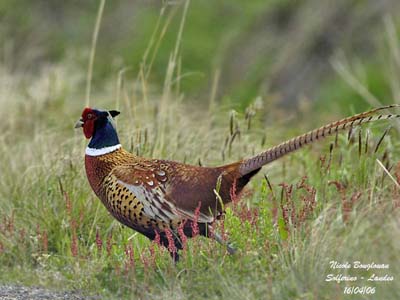
The Pheasants

The Pheasant’s origins go back to the Greek and Roman antiquity. This bird is native from India, South-eastern Asia and China. The right place is the Phasis, the river of Colchis. The Colchis is a part of Asia, located between the extreme East of the Black Sea and the Caucasus.
For the Greeks, the Phase was interesting as boundary between Europe and Asia, making possible to go towards the East through the Black Sea. The Common Pheasant or Ring-necked Pheasant (Phasianus colchicus) is the bird of the Phasis where it was found by the Argonauts who reached the land of Colchis. That explains the French name of this species: Faisan de Colchide.
This pheasant is the most widespread of this family which contains 49 species. This bird is common within its habitat. It has been introduced in Europe, North America, Tasmania and New Zealand.

The first introduced pheasants from Black Sea to Europe, and particularly to England in the 11th century, have been interbred with the Chinese Common Pheasant (Phasianus colchicus torquatus) and the Japanese or Green Pheasant (Phasianus versicolor), giving the Ring-necked Pheasant (Phasianus colchicus). The same pheasant was introduced to United States in the 19th century, but the birds suffer great hunting pressure every year. This bird is a common game bird in most parts of the range where its flesh is greatly appreciated.
Several subspecies of this pheasant exist today, coming from Eastern China and Transcaucasia, and from the close regions of the Black Sea. In addition, there is a wide variety of typical darker forms. Some melanic forms are the result of hybridization with the Green Pheasant, from Japan.
The Phasianidae family gathers pheasants and partridges, 155 species mainly distributed in the Old World.
Today, we bring our attention to the 49 pheasants’ species, in order to learn the behaviour of these amazing birds.
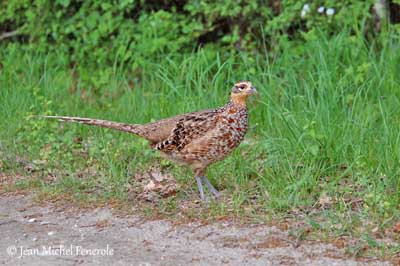
Pheasants are mainly terrestrial birds, preferring to reach the cover by running on the ground, even if they fly very well, except for long sustained flights. They have well developed breast muscles, because if these birds usually perform short bursts with rapid wing beats, they need strength enough for doing them quickly.
Male and female are very different. The males of most species have wonderful plumage, more or less bright coloured, but conspicuous. Females usually have cryptic plumage, in order to incubate the eggs with more safety. The nest is on the ground, and the dull colours provide them a good camouflage among the vegetation.
They have stocky body which appears too much large for the head and the short neck. Wings and tail vary in size, being short or long, according to the species. The legs are strong and fairly short, adapted for the life of these birds, with more terrestrial movements than flights.
Most males show spurs at the rear of the leg. Usually, they have one spur per leg. However, some species may bear more, such as the Malaysian Peacock-pheasant (Polyplectron malacense) which presents two spurs per leg.
The spurs are probably used in combat between males, but they also are supposed to play a role when a female chooses a mate. She seems to prefer long spurs…
Pheasant males show varied facial adornments used in courtship displays in front of a female, but also during aggressive behaviour against other males. These adornments are less visible or reduced outside the displays. We find four kinds of adornments, wattles, horns, crests and ruffs.
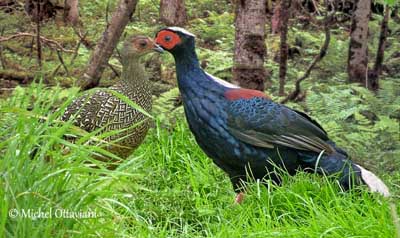
The Siamese Fireback (Lophura diardi) shows large red wattles covering almost the entire head. In addition, it has peculiar long crest. The Vieillot’s Fireback or Crested Fireback (Lophura ignita) is different with pale blue facial skin and short, dense, brush-shaped crest.
During the displays, the wattles are engorged and very conspicuous, and play an important role in the male’s appearance.
We can see other kinds of adornments such as crest, found in several species of pheasants and also in peafowl. The horns appear on the head sides and are found in Pucrasia and Tragopan. The ruffs are found in Chrysolophus, which are also known as the “ruffed pheasant”.
According to the species, the crest may be erected at all times, as in the Indian Peafowl (Pavo cristatus), or only during displays as in Malaysian Peacock-pheasant.
Some species such as Golden Pheasant (Chrysolophus pictus) and Lady Amherst’s Pheasant (Chrysolophus amherstiae), have fully spread ruffs during the displays.
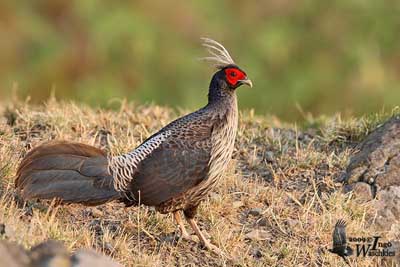
Crests, horns and ruffs are only composed of feathers. These beautiful adornments are used during courtship displays, but the entire plumage plays an important role at the beginning of the breeding season.
Displays are accompanied by calls and varied vocalises. Usually, the males give advertising calls. These vocal displays allow locating other pheasants’ species, mainly in the dense rainforest. The calls may vary according to the moment.
But some species such as the Crestless Fireback, and usually several tropical forest pheasants, do not utter loud crows.
However, pheasants have a wide range of calls, used for the communication between them. These calls may vary from sounds only audible at a few paces, to others which can be heard for kilometres. The Crested Argus (Rheinardia ocellata) in breeding season utters a prolonged whistle heard in the far distance.
Usually, numerous pheasants perform lateral or frontal displays where wings and tail play the most important role.
In order to appear larger than usual viewed from the side, the males spread wings and tail in lateral displays. The nearest wing is lowered, whereas the other is raised, in order to expose the beautiful plumage. The tail is always spread.
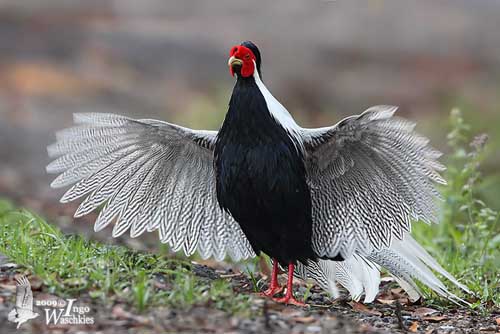
In frontal displays, wings and tail are spread symmetrically when the male faces the female. It adopts the best posture with head and breast lowered towards the ground for displaying the wonderful pattern of its plumage.
In addition, various other parts of the body become very conspicuous, such as inflated wattles, raised crest, erected horns or spread ruffs to impress the female.
Some species, such as the Silver Pheasant (Lophura nycthemera) perform “wing-whirring” by beating the wings very fast, producing a kind of whirring noise. This behaviour is typical in Lophura during the courtship displays. Some females may perform the same action, may be as contact call within the family group.
The Bulwer’s Pheasant’s display (Lophura Bulweri) is very spectacular, using the pure white spread tail arched over the back, while the outer rectrices are dropped and scrape the ground with a rustling noise. In addition, the bright blue wattles are very inflated and curve-shaped, with about 18-20 cm in length, where only the red eyes contrast strongly.
Other very peculiar display is that of the Western Tragopan (Tragopan temminckii) with its wonderful head adornments. The red and blue pattern of the long wattles appears completely developed during the displays, whereas outside this period, they are retracted and inconspicuous. At the peak of the courtship display, two bright blue horns are erected above the eyes, adding a spectacular pattern when the male faces the female.
Each species uses its adornments in the best way for attracting females. All are spectacular, and even the males with duller plumage than others perform very beautiful displays, and know how to expose their best “winning cards”!
Usually, the pheasants are polygamous, with one male for two to five females, but the mating patterns in Phasianidae may vary from monogamous to sequential polygamy. Within the group, males guard the females against predators or other males.
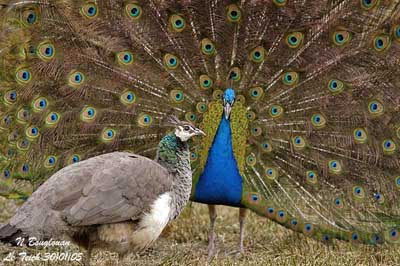
It is time for female for laying the eggs, and the clutch size varies according to the species. The Crestless Fireback lays four to five eggs. The Silver Pheasant and the Copper Pheasant lay seven eggs, whereas the Elliot’s Pheasant may lay five to eight eggs. Some species lay up to fifteen to eighteen eggs, but usually, the clutch size is closely related to availability of food resources. Sometimes, several females may lay their eggs in a communal nest.
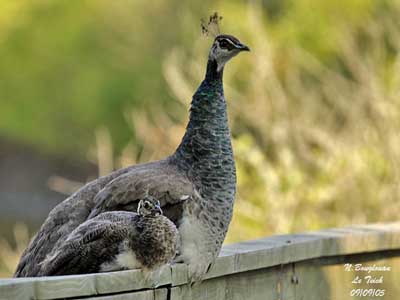
Incubation is mainly by females, and according to the mating system, the monogamous males defend the territory whereas the polygamous males attract other females for mating. The incubation period also varies with each species, from eighteen to twenty five days, and up to one month in the Indian Peafowl.
Young are precocial and able to move and to feed as soon as they hatch. Adults lead them to food sources and the young feed on their own. But the female, or both parents, may also help the young by tossing food towards them, or placing it in front of the chicks, or even sometimes from bill to bill. The adults utter calls to indicate the food items to the young.
Pheasants are often seen in family groups, and they join other flocks after the breeding season for safety. An adult may feign injury such as broken wing or other behaviour, for leading a predator away, while the young are hidden and motionless.
The precocial young are able to walk, run and jump three days after hatching, and they can fly at about twelve days of age.
The pheasants feed on varied kinds of food according to the species, the season and sometimes the habitat. They consume mainly plant items such as seeds, flowers, buds, leaves, stems, roots and tubers of several plants’ species. But the Phasianidae also feed on invertebrates, larvae and even small reptiles.
However, the pheasants living in northern parts of the range and at high altitudes are more vegetarian than birds which inhabit tropical rainforest where they are almost entirely consumers of invertebrates, but their diet also includes some fruits, seeds and leaves. The species living in less forested areas or forest edges may survive in cultivated fields.
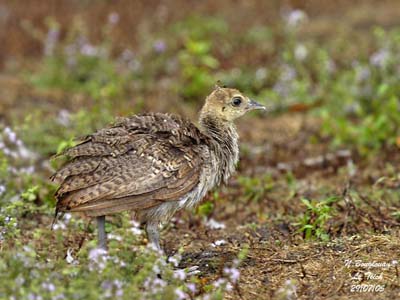
The chicks feed mainly on insects in the first days of their life, during about three weeks when possible. But in the high mountains of Europe and Asia where the species are vegetarian, the chicks take high proportions of leguminous plants which give them the necessary proteins when insects are not available.
Usually, pheasants feed on the ground, but some species such as the Satyr Tragopan (Tragopan satyra) and the Blood Pheasant (Ithaginis cruentus) are arboreal and may climb into bushes or low branches of trees, searching for leaves, moss and berries.
Other species forage at ground level, snapping at insects, gleaning seeds and turning over the leaf litter. They dig with their strong bill into the soil to reach roots and tubers.
The forest species feed mainly by turning over the leaf litter with the bill instead of digging, or they scratch away with their feet, as the Crested and Crestless Firebacks which feed in groups.
The Great Argus - Argusianus argus is a solitary species and feeds by picking up the food from the surface of the litter, but not by digging.
In the daily routine of the pheasants, feeding occurs in the morning after emerging from the roost, and in the late afternoon. In the middle of the day, the pheasants rest under cover.
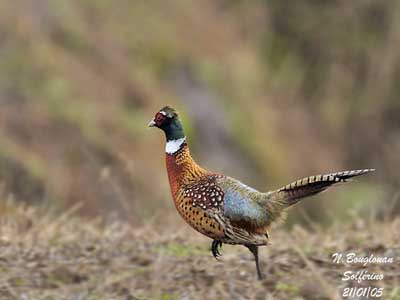
The Phasianidae are Old World’s birds. They live mainly in South-east Asia. Several species, and especially the Common Pheasant have been introduced into Europe, North America, Tasmania and New Zealand, where they are famous game birds.
Pheasants frequent mainly forested and semi-wooded habitats, from humid tropical forests to temperate scrub forests. They may be found from lowlands to high meadows, and up to 4000 metres of elevation during the summer in the Himalayas and Western China. The range of each species varies in size, according to the habitat type.

But today, unfortunately, numerous pheasants’ species are endangered or threatened, due to habitat loss with land clearance and deforestation, hunting pressure and trapping for food.
The numbers of several species are declining, and some of them are near extinction. This family requires the most urgent attention, in order to protect these wonderful birds.
Conservation efforts by Birdlife International are running in the Himalayan regions, and National Parks are created, offering protection to several threatened species.
It would be great to see again these stunning birds living in suitable habitat!
Other presentation with ancient paintings: SOLENE
Photographers :
Jean Michel Fenerole
Photos d’Oiseaux du monde
Michel Ottaviani
Le site de Michel Ottaviani
Ingo Waschkies
Bird Photography
Nicole Bouglouan
PHOTOGRAPHIC RAMBLE
Text by Nicole Bouglouan
Sources:
HANDBOOK OF THE BIRDS OF THE WORLD Vol 2 by Josep del Hoyo-Andrew Elliot-Jordi Sargatal - Lynx Edicions - ISBN: 8487334156
Citation: Hennache, A. & Ottaviani, M. (2005). Monographie des faisans, volume 1. Edition W.P.A. France, Clères, France. ISBN: 2-9512467-1-4
Citation: Hennache, A. & Ottaviani, M. (2006). Monographie des faisans, volume 2. Edition W.P.A. France, Clères, France.ISBN: 2-9512467-2-2
"Les auteurs renoncent à leurs droits d'auteurs pour que la vente de cet ouvrage, publié par la World Pheasant Association, soit destinée à soutenir des projets de conservation."
Wikipedia (Wikipedia, The Free Encyclopedia)
Phasianus colchicus
Reeves's Pheasant
Syrmaticus reevesii
Female
Swinhoe's Pheasant
Lophura swinhoii
Pair
Lophura leucomelanos
Lophura nycthemera

Siamese Fireback
Lophura diardi
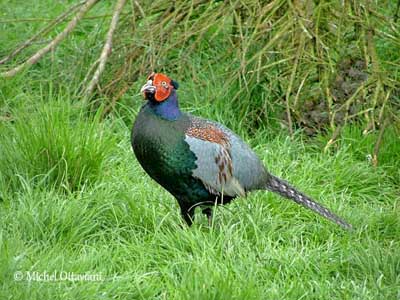
Pavo cristatus
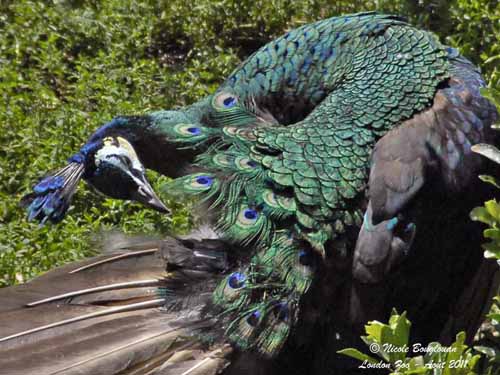
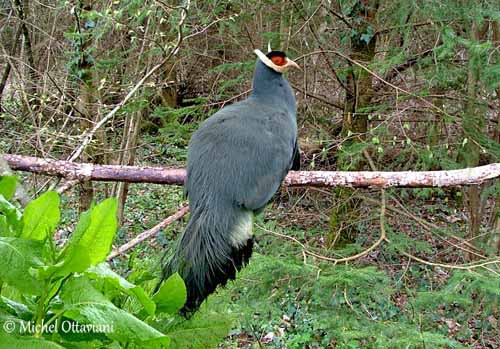
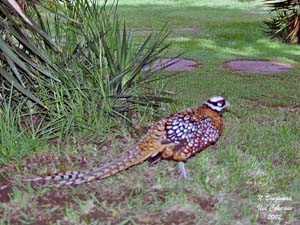
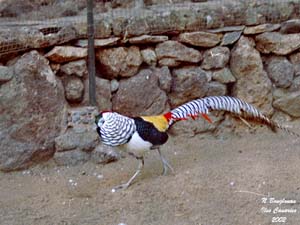
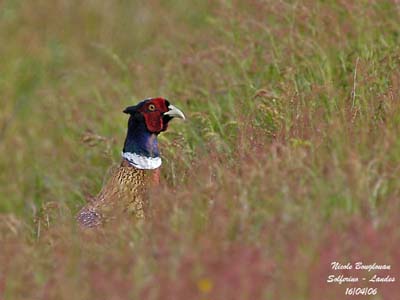
Green Pheasant - Phasianus versicolor
Pavo muticus
Blue Eared Pheasant
Crossoptilon auritum
Chrysolophus amherstiae
Reeves's Pheasant
Syrmaticus reevesii
Pavo cristatus
Pavo cristatus
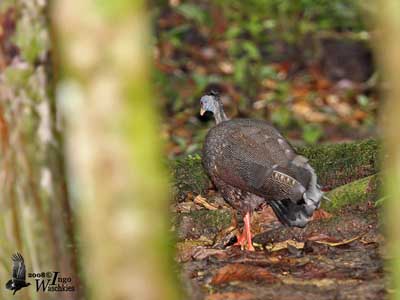
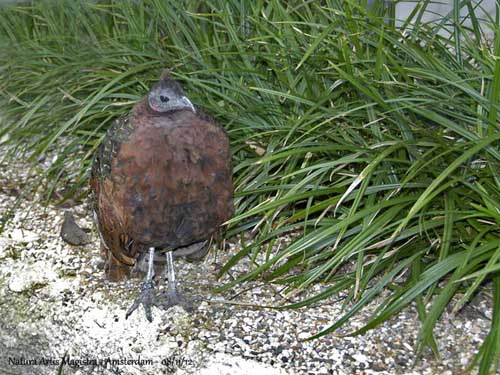
Congo Peafowl
Female
Afropavo congensis